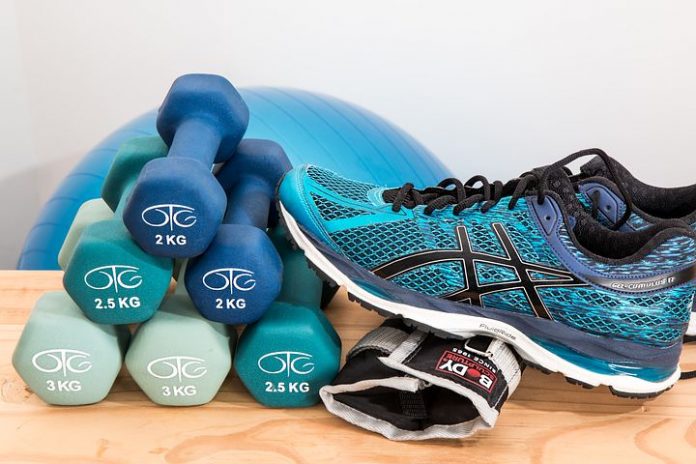Having a fitness goal is one way of achieving your road to wellness. Whether you’ve been exercising for years or are just about to start a fitness regimen, one thing you should always keep in mind is to avoid any sort of injury while working out.

We all know that our bodies undergo tremendous changes as we get older, mainly due to decreased agility and loss of muscle and bone mass. This means that there is a higher chance for one person to become more vulnerable to injuries when exerting effort. Not only is age a contributing factor to injury, but it also causes longer recovery. According to Seattle Pain Relief, most experts note that the most common exercise-related injuries they see in their clinic are:
- Sprains: These are the injuries that affect the ligament or the tissues that connect the bones together.
- Tendinitis: This injury often occurs in individuals who tend to overuse, causing tendon inflammation.
- Muscle Strains: This commonly affects the muscles and tendons.
- Meniscus Tear or Anterior Cruciate Ligament (ACL) tear: This happens when the ligaments that stabilize the knees or the cartilage that serve as knee joint cushions undergo a tear or rip.
- Rotator Cuff Tears: These are the tears that affect the muscles that hold the shoulder socket arm.
Preventing these injuries is crucial if you don’t want to get sidelined for weeks. Here are 10 ways to do so:
1. Consult Your Doctor

It can be tempting to start a workout regimen. However, it is not ideal if you do so without consulting your primary care provider. They can determine whether you are healthy and fit enough to exercise, and are adept in recommending what modifications in your program may be necessary to avoid any significant issues. Ideally, each exercise program should be customized to match a person’s current health needs, considering any possible limitations they may have, including any existing medical conditions.
2. Choose Your Exercise Regimen
Don’t enter into an exercise program just because everybody else is doing it. You should choose programs and routines that suit your personal needs. For example, high-impact exercises are not recommended for individuals suffering from slipped disc or osteoporosis, as it can only worsen their condition. In such cases, it would be best to stick to non-impact or low-impact workouts such as swimming or yoga, as these exercises will keep your heart pumping without causing undue stress to your joints.
3. Learn the Proper Form

There are tons of activities available at your disposal, and some may have movements that you are unfamiliar with. When you encounter these exercises, it would be best to learn how to perform it properly before attempting it. For example, a squat may seem easy, but there have been instances where people overarch their back and extend their knees improperly. Without proper form and posture, it can cause strain on your knees and back. If you are unsure, it would be best to consult with a physical therapist or work with a trainer to help you with your technique.
4. Gear Up Appropriately
One of the most critical parts of ensuring that you don’t encounter any injuries during your workout is to have the right gear. For example, it is obvious that you would find it limiting to wear denim shorts for a workout. The same is true when choosing the right shoes for running. Ideally, you should go for one that gives you sufficient arch support and shock absorption.
5. Don’t Force It
Whenever you are starting a new workout make sure to do it gradually. Total Shape helps you monitor your body mass while doing a gradual workout, which is also one thing that is important. Often, injuries result when people try to increase the repetitions and intensity of their training. It doesn’t matter if you have been working out for a long time. Injuries can happen if the body notices a sudden change in pace. Start slowly and increase your speed gradually. Never force it, and only exercise when you feel your body is ready.
6. Warm Your Body Up

Most experts advise warming up before any workout. Cold muscles are more prone to injury. Warming up allows your body to have better blood flow to the muscle groups. Plus, it also reduces stiffness, reducing your risk for injury. Note that warm-ups should be active. Go for stretches that allow you to do dynamic movements such as walking and leg lifts. In general, passive stretches or holding a stretch without movement should be avoided because it can lead to muscle tears.
7. Increase Your Fluid Intake
Whenever you work out, your body releases sweat, and this means along with it are some essential fluids that should help you make it through your exercise regimen. That said, you need to increase your fluid intake. Drinking a glass of water before each workout and taking a few sips throughout the routine can help your body regulate better, allowing your muscles to carry out each movement you make.
Use Proper Shoe:Proper shoes can make a huge difference in your workouts and with preventing injury. If you’re used to wearing sneakers, try going for some actual workout shoes that are designed specifically for the needs of an active person’s foot!
8. Always Cool Down
Cooling down helps your body to cope and catch up. It also contributes to increasing flexibility. Always finish your work out with a gentle stretch or slow walk for at least 10 minutes.
9. Add Variation to Your Workout
If you want to prevent injuries, it will help to add variation to your workout. You may love doing yoga, but it would do your body better if you alternate it with other activities such as dancing, swimming, or tennis. Workout variations are significant for activating different muscle groups. Plus, it also helps your muscles to recover from the previous workout.

10. Listen to Your Body
One of the common mistakes people do is to continue working out until their body aches all over. It may seem like you did your work, but, in reality, you are only hurting your body. You need to learn how to listen to your body. Working out through the pain can only worsen your injury and prolong your recovery time.
Follow these tips, and you’ll soon reach your health and wellness goals without any injury.









